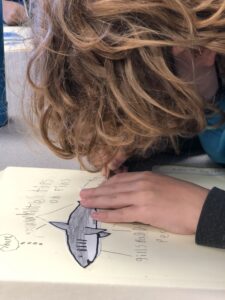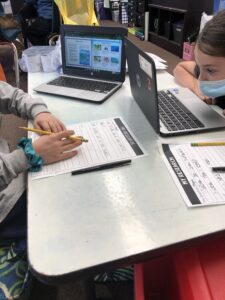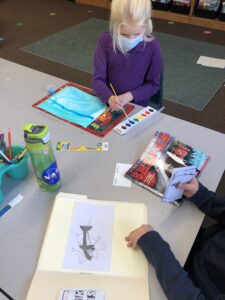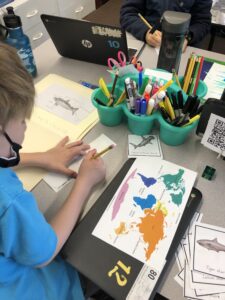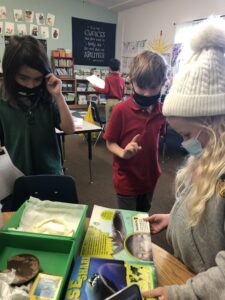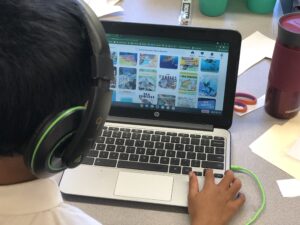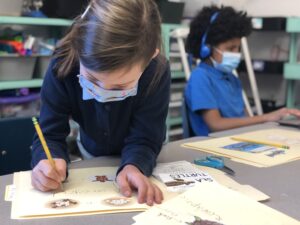“How hard does a shark bite?” “Why do turtles leave their eggs on the sand?” “Which shark is the fastest?” “Do all turtles live to be the same age?” “Why are shark eyes black?”
Kids are naturally curious and easily inquisitive about the world around them. They ask many many questions throughout the course of the day, expecting those around them to know the answers. They are experts in the art of asking questions but are still developing the skills needed to answer those questions. These wonderings about sharks and turtles arose during a recent activity as students began to learn how to research to answer their questions.
Research is a multi-faceted skill in which students need to be be able to interpret, infer, analyze and finally summarize the information they are searching for. These are key critical thinkings skills that enable them to make better sense of the world around them and dig through the vast amounts of information out there.
Students in second grade are just beginning to utilize independent reading & writing skills, as well as navigating different technology. In order for students to be successful in the sometimes complicated area of research, three things should be kept in mind when teaching children of this age research skills. They are Simple Inquiry, Sources and Scaffolding.
The first thing is to keep the inquiry simple. Students first learn how to narrow their question down to a focused inquiry in which they are able to find the answer. An example of this might be “How many species of sea turtles live in the ocean?” as opposed to “What are all of the living things that live in the ocean?” Later as research skills grow, students can ask (and answer) broader questions. In simpler inquiries, it is possible for students to begin to practice the skills of inference and summarization more easily.
The second thing is to remember that research can, and should, come from a variety of resources. Observations, hands-on exploration, interviews, books, articles, movies, articles, web pages, etc are all viable ways of researching. Students have a wealth of knowledge at their fingertips these days with such easy access to the web, but other sources of information are important as well. In teaching students to research with technology, they learn that screens can become a tool instead of a toy. They also begin to learn the very important skills of being a good digital citizenship and properly citing the work of another.
The third and final thing when researching for children is to provide a variety of scaffolds so that their endeavors are successful. Edglossary defines scaffolding as “
When a realistic and reachable expectation for research is in place, and students are able to begin to navigate technology and other sources for themselves, they begin to see that they are capable of finding answers to those excellent questions they come up with.
